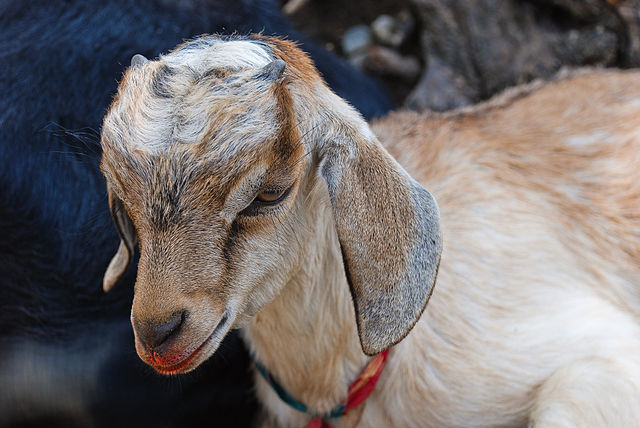A late 2024 Emirates Nature-WWF initiative to replant the overgrazed Hajar mountains in eastern Dubai has underlined the grass-fed UAE goat rearing set up.
In presenting its partnership with Visa to replant forests, Emirates Nature-WFF cites that overgrazing has reduced new vegetation habitats here.
This is why the scientific agency wants to keep goats at bay via steel fences after planting the drought-resistant Sho’a (Moringa peregrina) saplings.
The agency says that when saplings are just sprouting, the animals come and clear them away.
Human activity has degraded other pastures, leading herders to the Al Hajar, which in the Arabic means “The Rock.” Luckily, the rich country’s modern construction boom is concentrated in the major cities, with little impact on forest reserves and wildlife.
In the UAE, however, human activities hand-in-hand with overgrazing, are degrading wildlife habitats.
This mirrors a similar scenario, worldwide. WWF via its Living Planet Report 2024 links human activity with the depletion of wildlife by a global margin of 73%.
Goat Population Up
Overgrazing is only natural given that the population of Emirati goats doubled in the decade between 2010 and 2020.
In its June 2024 report, the government placed the goat population at 2,182,082 in 2014 and 2,225,532 in 2015.
By 2018, the figure had stabilized at 1,978,437 but would return to the 2-million head territory at 2,200,000 in 2021.
The above figures are almost a double growth from those of the turn of the millennium of 1,300,000 head in 2001.
There is also the multiplicity of goat breeds to configure, from local to imported types such as the Jaziri and Somali breeds. The Jaziris had faced an import ban in 2014 but a review by the Environment Ministry saw their comeback in 2020.
Thus, as the UAE goat population burgeons, an agency is trying to regrow the depleted forests that serve as their pastures. Below data provides further exploration of the parallels between the environment and goat rearing in the country.
UAE Goat Rearing and Feeding Statistics
With over 2.2 million goats, as of 2021, the UAE is a bastion of livestock production in the Arabian peninsula. According to research, Emiratis rear goats of different types for diverse reasons, the chief one being meat production at 94%. Meanwhile, adaptability to the environment informs 40% of the choice for rearing goats, especially for grazing breeds. Breeders in the UAE also attach 35% of their goat selection criteria to disease resistance. In 2018, pastures for grazing livestock such as goats occupied 3.6% of land use, while permanent crops occupied 0.5%. This shows how grazing is an important part of the feeding regime of goats in the country.
Are there other goat feeding methods in the UAE apart from grazing?
Most goat rearing projects that rely on fodder and other feeding methods are usually large-scale. One such took place in early 2016, through a goat farm project in Dubai that could accommodate 10,000 head. The feeding belt in the project measured 80 meters and the pens had strategic watering holes.
How much does the UAE import in animal feed?
Mixed animal feed imports reached 91,764 tonnes worth $143,574, according to ITC. Most of the imports were from Thailand, which supplies feed worth $26,894.
